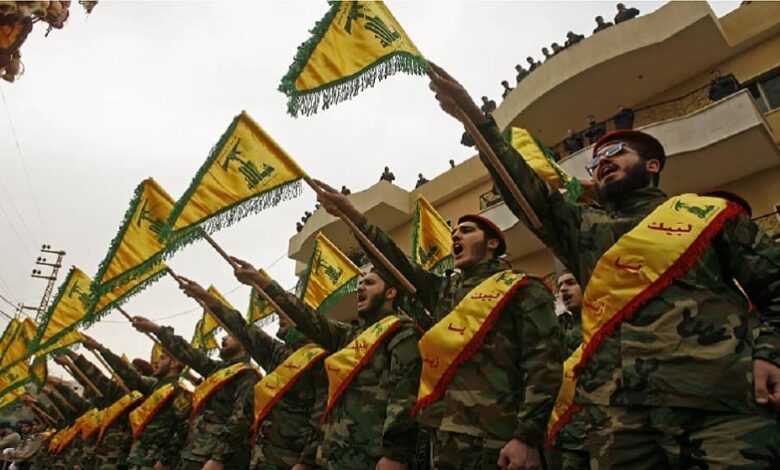What Has Iranian Regime’s War Economy Produced?

hezbollah iran backed militia forces
Written by
Mahmoud Hakamian
Three-minute read
As Iran begins the second month of the year 1403 on its calendar (March 2024- March 2025), concerns about its future economic and social landscape loom large among many state-affiliated experts. Despite these apprehensions, the religious regime continues to prioritize its evil agenda, steering the nation towards a wartime economy. This economic model thrives amidst global conflicts in regions like Sudan, Ukraine, and Gaza, worsening the impoverishment and hunger experienced by the Iranian people.
In an article published on April 14, the state-run newspaper Ham-Mihan interviewed several experts who painted a bleak picture of Iran’s economic and social outlook. According to Ham-Mihan, “In the coming year, Iranian society is unlikely to see any improvements in economic and social conditions, with discontent persisting as existing challenges endure.”
According to Alireza Heydari, Vice President of the Union of Veteran Workers, “Workers have become poorer in the past two years, with the real purchasing power of workers decreasing by about 34%. The wages set for 1403 are lower than the average inflation rate announced. In addition to suffering from poverty, the working class must also endure the hardship of illness.”
Former Tehran University of Medical Sciences president Ali Jaffarian told Ham-Mihan, “In unfavorable economic conditions, people prioritize healthcare less, considering it among non-essential expenses.”
Watch and judge how #Khamenei who has been squandering #Iran's wealth on global terrorism and regional warmongering has got the nerve to accuse ordinary people of wasting water, bread and electricity. pic.twitter.com/YCGqWdVkK7
— NCRI-FAC (@iran_policy) January 29, 2024
Amirhossein Jalalinadoushan, a social psychiatrist, shared with Ham-Mihan, “The extent of economic problems and destabilizing issues affecting families and citizens is so significant that legal and social pressures, along with governmental expectations, can potentially disrupt any remaining balance.”
Mohammadreza Niknejad, a member of the Teachers’ Association, added, “About 3-4 million students are left behind in their education, many of whom have economic roots, meaning their families cannot afford the cost of their education.”
Kamel Delpasand, a sociologist, added, “It is believed that if conditions continue in this manner, economic, social, and political collapse is probable.”
Meanwhile, as the world stands by, Tehran deftly navigates international sanctions regimes and capitalizes on high oil and gas prices, solidifying its position as a significant player in the global arms trade. According to a report by the state-affiliated website KhabarOnline on February 21, “Iran’s export of weaponry has seen a remarkable expansion in recent years, with drones, missiles, aerospace, and maritime sectors witnessing substantial growth and attracting significant interest from diverse clientele.”
The source further added, “Although precise official statistics in this domain have not been released in recent years, research conducted by the Stockholm International Peace Research Institute (SIPRI) indicates that while Iran’s arms exports were around $9 million in 2015, this figure rose to $20 million in 2017. The Islamic Republic reportedly sold approximately $200 million worth of weapons and military equipment between 2010 and 2014.”
EU leaders in Brussels are currently seeking a solution to the escalating conflict spreading across the Middle East and beyond. For 40 years, the Iranian Resistance has vehemently asserted that the regime in #Iran is the head of the snake of warmongering and #terrorism, and the… pic.twitter.com/u2zap3a3EE
— Maryam Rajavi (@Maryam_Rajavi) April 18, 2024
The source claimed that the regime has collaborated in arms dealings with over 40 countries worldwide, with a significant portion of these transactions focusing on drone technology. KhabarOnline, citing Western sources, mentioned Russia, Ethiopia, Tajikistan, Bolivia, Venezuela, Iraq, and others as countries engaging in notable defense collaborations with Iran, including being destinations for Iranian arms exports.
Additionally, the government source quoted a senior military official claiming, “Iran’s Defense Industries Organization has experienced a 200% growth in the past year, with its produced armaments exported at two and a half times the rate of the previous year.”
According to The Wall Street Journal, in a report discussing the rise of the Islamic Republic as a major arms provider worldwide, customers purchasing low-cost, high-tech weaponry from the Iranian regime are seen as a threat to the interests of the United States and its allies not only in the Middle East and Ukraine but also beyond.
This report, published on February 16, highlights how the transformation in Iran’s arms industry, fueled by the sale of thousands of drones to Russia in 2022, has altered the battlefield dynamics, particularly in Ukraine. This shift has aided Tehran in bolstering support for semi-state groups in the Middle East.
Why Firmness Will Prevent War with #Iran pic.twitter.com/FldhbJpZ3X
— NCRI-FAC (@iran_policy) April 3, 2024
According to The New York Times, the Iranian regime’s attack on April 14 on Israel involved 331 weapons, including 185 drones, 36 cruise missiles, and 110 surface-to-surface missiles. The Israeli army reported that these weapons carried a total of 60 tons of explosives. Online estimates suggest each missile costs between $5 to $12 million, totaling approximately $306 million. Drones, priced between $20,000 to $50,000 each, added about $6.475 million. The missiles, estimated at $1 to $5 million each, contributed approximately $275 million. Thus, the weaponry expenditure alone stands at roughly $587 million, let alone the political, logistical, and human costs.
Considering the immense expenses borne by Tehran’s adversaries to counter its aggressive pursuits, alongside the lasting impact on the social fabric of Middle Eastern, European, and American societies, it’s clear that Iran’s war economy not only harms its own population but also poses a global threat.
The failure of the international community to acknowledge the clerical regime as the main driver of global instability and extremism has resulted in one of the world’s wealthiest nations inadvertently funding global insecurity to the detriment of its citizens. As this flawed approach persists, the inevitable repercussions worsen, amplifying the costs of resolving these issues. With each passing moment, the toll in both lives and resources mounts on all fronts.

